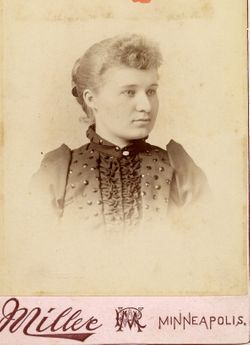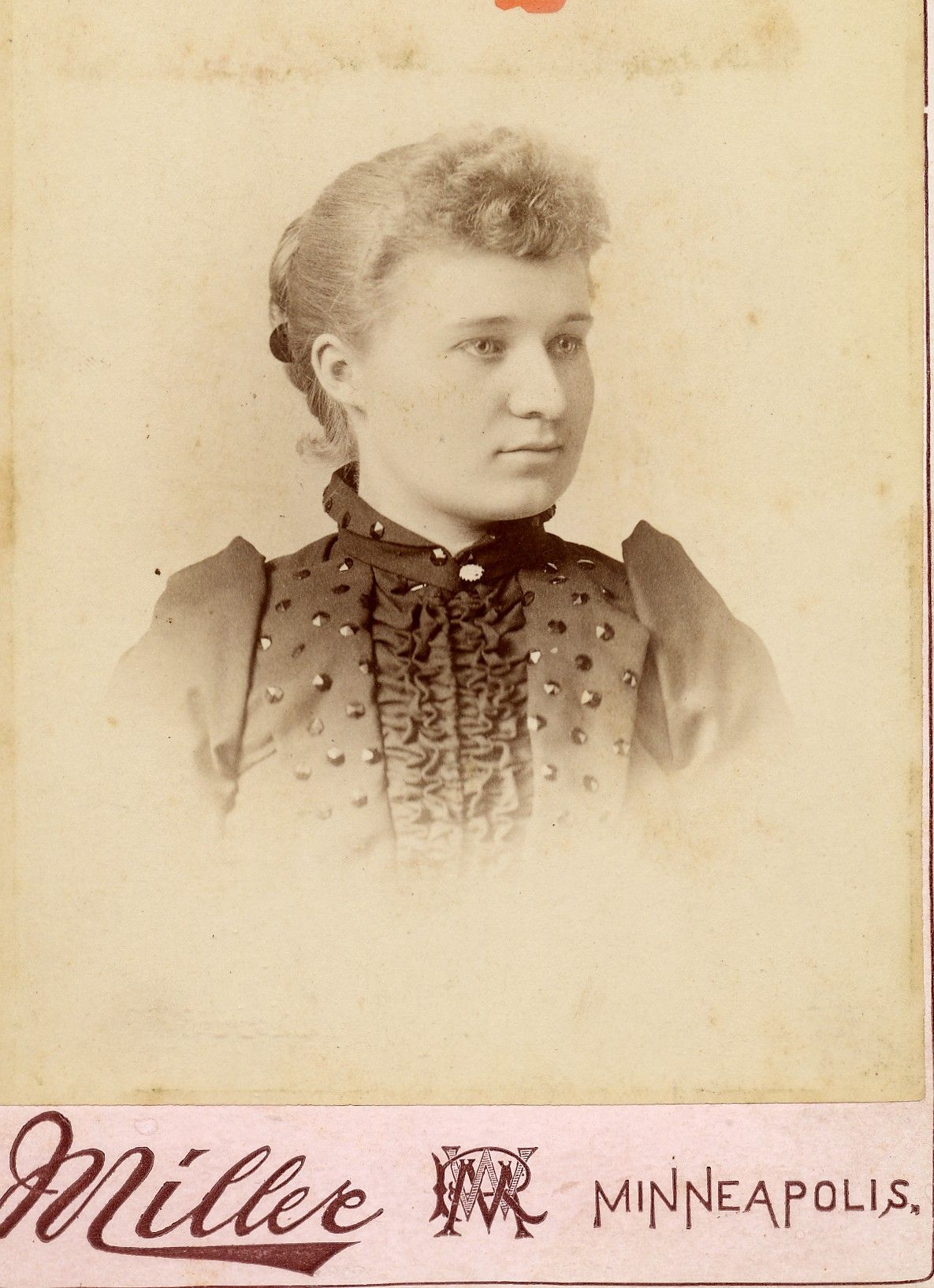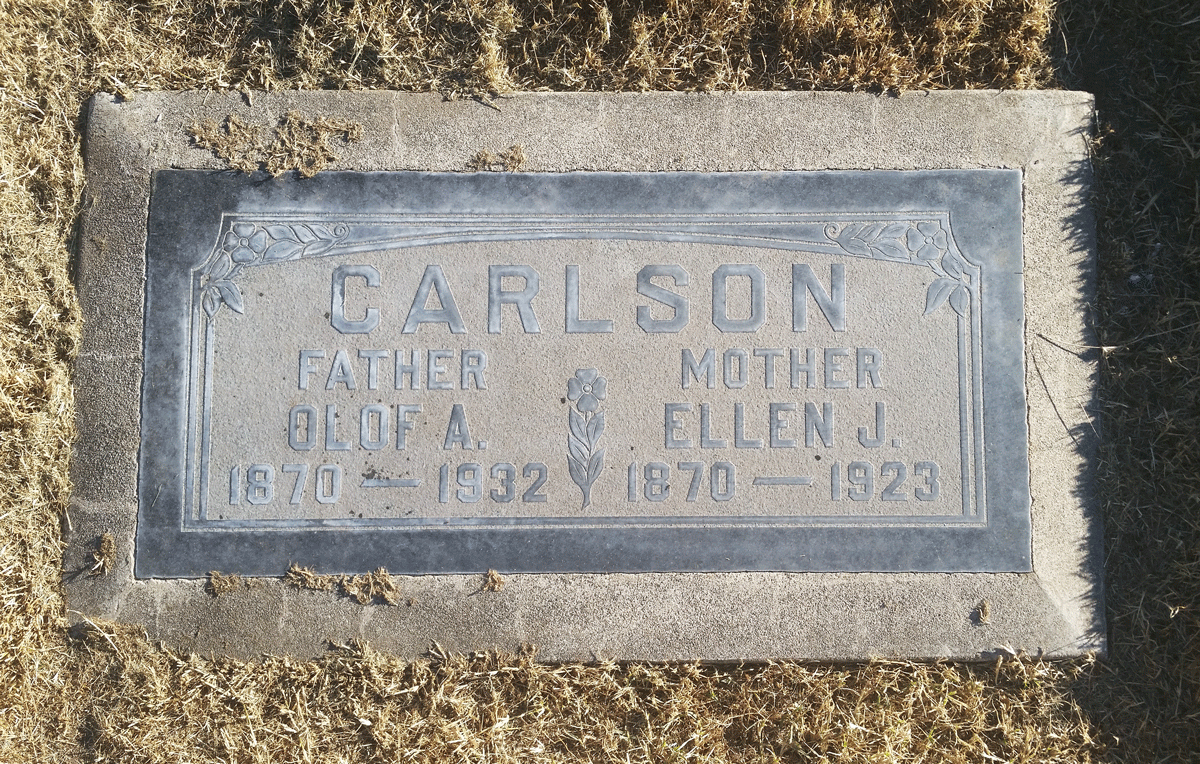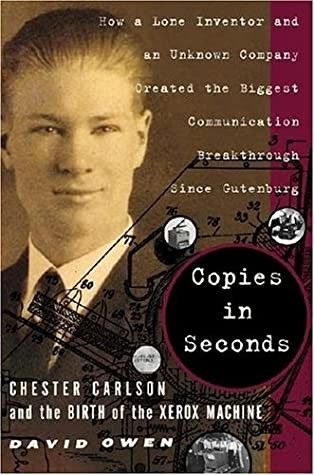Ellen married Olof Adolph Carlson, son of Peter Carlson and Ellen Jonsdotter .
She contacted malaria in 1910 at the age of 40 when her husband and son, Chester (3 yrs old) moved to Mexico for seven month period. Her husband already suffered from a severe case of tuberculosis and later suffered from arthritis of the spine (a common, age-related disease).
Both she and her husband were extremely intelligent, but were brought down by debilitating diseases.
By the time son, Chester, was in high school, he was their family’s principal provider. Ellen died of tuberculosis when her son, Chester Floyd Carlson was 17, and her husband, died when their son was 27.
Their son worked to support the family with odd jobs by the age of eight. By the time he was thirteen, he would work for two or three hours before going to school, then go back to work after classes. All this had a profound effect on his development.
At an early age, and with such time as Chester had, he turned toward interests of his own devising, making things, experimenting, and planning for the future.
At high school age he built a shack for a laboratory and sleeping room back of his house.
Son, Chester, attended Riverside's Junior College for three years, where he studied chemistry. He was then admitted to the California Institute of Technology, from which he graduated with a B.S. in Physics in 1930. He graduated from Cal Tech in the midst of the Great Depression and managed to find work as a Research Engineer at Bell Telephone Laboratories in New York City. Bored with his job, he requested a transfer to the company's patent office. After working as an assistant to Bell's patent attorney. He obtained a law degree and became an American patent attorney and as he got older he came down with arthritis and had pain in his hands which pushed him to invent something to copy words after many years of experimenting in a make-shift lab. in his kitchen, he went on the invent and patent the Xerox machine. At his death he was one of the richest men in America. He was named inventor of the year in Science in 1964. A book has been written on his life. Chester died of a heart attack in New York City at the age of 62. In 1981, he was inducted into the National Inventors Hall of Fame. His groundbreaking invention transformed the way business is conducted around the world and is the cornerstone of today's multibillion-dollar photocopying industry and newer light-based copy machines, such as the laser printer.
Book about Chester:
Copies in Seconds by David Owen (Simon & Schuster, 2005).
Ellen married Olof Adolph Carlson, son of Peter Carlson and Ellen Jonsdotter .
She contacted malaria in 1910 at the age of 40 when her husband and son, Chester (3 yrs old) moved to Mexico for seven month period. Her husband already suffered from a severe case of tuberculosis and later suffered from arthritis of the spine (a common, age-related disease).
Both she and her husband were extremely intelligent, but were brought down by debilitating diseases.
By the time son, Chester, was in high school, he was their family’s principal provider. Ellen died of tuberculosis when her son, Chester Floyd Carlson was 17, and her husband, died when their son was 27.
Their son worked to support the family with odd jobs by the age of eight. By the time he was thirteen, he would work for two or three hours before going to school, then go back to work after classes. All this had a profound effect on his development.
At an early age, and with such time as Chester had, he turned toward interests of his own devising, making things, experimenting, and planning for the future.
At high school age he built a shack for a laboratory and sleeping room back of his house.
Son, Chester, attended Riverside's Junior College for three years, where he studied chemistry. He was then admitted to the California Institute of Technology, from which he graduated with a B.S. in Physics in 1930. He graduated from Cal Tech in the midst of the Great Depression and managed to find work as a Research Engineer at Bell Telephone Laboratories in New York City. Bored with his job, he requested a transfer to the company's patent office. After working as an assistant to Bell's patent attorney. He obtained a law degree and became an American patent attorney and as he got older he came down with arthritis and had pain in his hands which pushed him to invent something to copy words after many years of experimenting in a make-shift lab. in his kitchen, he went on the invent and patent the Xerox machine. At his death he was one of the richest men in America. He was named inventor of the year in Science in 1964. A book has been written on his life. Chester died of a heart attack in New York City at the age of 62. In 1981, he was inducted into the National Inventors Hall of Fame. His groundbreaking invention transformed the way business is conducted around the world and is the cornerstone of today's multibillion-dollar photocopying industry and newer light-based copy machines, such as the laser printer.
Book about Chester:
Copies in Seconds by David Owen (Simon & Schuster, 2005).
Inscription
MOTHER
Family Members
Sponsored by Ancestry
Advertisement
Advertisement









